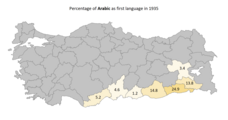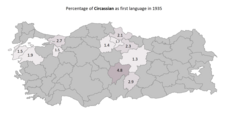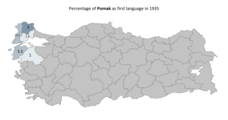
Demographic features of the population of Turkey include population density, ethnicity, education level, health of the populace, economic status, religious affiliations and other aspects of the population.
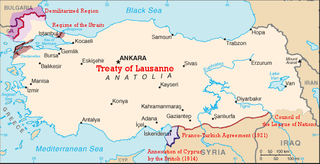
The Treaty of Lausanne is a peace treaty negotiated during the Lausanne Conference of 1922–23 and signed in the Palais de Rumine in Lausanne, Switzerland, on 24 July 1923. The treaty officially resolved the conflict that had initially arisen between the Ottoman Empire and the Allied French Republic, British Empire, Kingdom of Italy, Empire of Japan, Kingdom of Greece, Kingdom of Serbia, and the Kingdom of Romania since the outset of World War I. The original text of the treaty is in English and French. It emerged as a second attempt at peace after the failed and unratified Treaty of Sèvres, which had sought to partition Ottoman territories. The earlier treaty, signed in 1920, was later rejected by the Turkish National Movement which actively opposed its terms. As a result of Greek defeat in the Greco-Turkish War, Turkish forces recaptured İzmir, and the Armistice of Mudanya was signed in October 1922. This armistice provided for the exchange of Greek-Turkish populations and allowed unrestricted civilian, non-military passage through the Turkish Straits.

The Treaty of Sèvres was a 1920 treaty signed between some of the Allies of World War I and the Ottoman Empire, but not ratified. The treaty would have required the cession of large parts of Ottoman territory to France, the United Kingdom, Greece and Italy, as well as creating large occupation zones within the Ottoman Empire. It was one of a series of treaties that the Central Powers signed with the Allied Powers after their defeat in World War I. Hostilities had already ended with the Armistice of Mudros.

Hatay Province is the southernmost province and metropolitan municipality of Turkey. Its area is 5,524 km2, and its population is 1,686,043 (2022). It is situated mostly outside Anatolia, along the eastern coast of the Levantine Sea. The province borders Syria to its south and east, the Turkish province of Adana to the northwest, Osmaniye to the north, and Gaziantep to the northeast. It is partially in Çukurova, a large fertile plain along Cilicia. Its administrative capital is Antakya, making it one of the three Turkish provinces not named after its administrative capital or any settlement. The second-largest city is İskenderun. Sovereignty over most of the province remains disputed with neighbouring Syria, which claims that the province had a demographic Arab majority, and was separated from itself against the stipulations of the French Mandate of Syria in the years following Syria's occupation by France after World War I.

The history of the Jews in Turkey covers the 2400 years that Jews have lived in what is now Turkey.
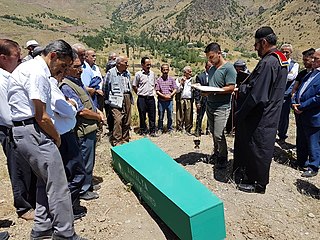
Assyrians in Turkey or Turkish Assyrians are an indigenous Semitic-speaking ethnic group and minority of Turkey who are Eastern Aramaic–speaking Christians, with most being members of the Syriac Orthodox Church, Chaldean Catholic Church, Assyrian Pentecostal Church, Assyrian Evangelical Church, or Ancient Church of the East.
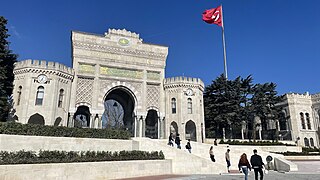
Education in Turkey is governed by a national system which was established in accordance with Atatürk's Reforms. It is a state-supervised system designed to produce a skillful professional class for the social and economic institutes of the country.
Turkification, Turkization, or Turkicization describes a shift whereby populations or places receive or adopt Turkic attributes such as culture, language, history, or ethnicity. However, often this term is more narrowly applied to mean specifically Turkish rather than merely Turkic, meaning that it refers more frequently to the Ottoman Empire's policies or the Turkish nationalist policies of the Republic of Turkey toward ethnic minorities in Turkey. As the Turkic states developed and grew, there were many instances of this cultural shift.
Minorities in Greece are small in size compared to Balkan regional standards, and the country is largely ethnically homogeneous. This is mainly due to the population exchanges between Greece and neighboring Turkey and Bulgaria, which removed most Muslims and those Christian Slavs who did not identify as Greeks from Greek territory. The treaty also provided for the resettlement of ethnic Greeks from those countries, later to be followed by refugees. There is no official information for the size of the ethnic, linguistic and religious minorities because asking the population questions pertaining to the topic have been abolished since 1951.
Armenians in Turkey, one of the indigenous peoples of Turkey, have an estimated population of 40,000 to 50,000 today, down from a population of over 2 million Armenians between the years 1914 and 1921. Today, the overwhelming majority of Turkish Armenians are concentrated in Istanbul. They support their own newspapers, churches and schools, and the majority belong to the Armenian Apostolic faith and a minority of Armenians in Turkey belong to the Armenian Catholic Church or to the Armenian Evangelical Church. They are not considered part of the Armenian Diaspora, since they have been living in their historical homeland for more than four thousand years.

The Greeks in Turkey constitute a small population of Greek and Greek-speaking Eastern Orthodox Christians who mostly live in Istanbul, as well as on the two islands of the western entrance to the Dardanelles: Imbros and Tenedos. Greeks are one of the four ethnic minorities officially recognized in Turkey by the 1923 Treaty of Lausanne, together with Jews, Armenians, and Bulgarians.

Turks of Western Thrace are ethnic Turks who live in Western Thrace, in the province of East Macedonia and Thrace in Northern Greece.
Arabs in Turkey are about 1.5 or 5 million citizens or residents of Turkey who are ethnically of Arab descent. They are the third-largest minority in the country after the Kurds and the Circassians and are concentrated in a few provinces in Southeastern Anatolia. In addition to this native group, millions of Arab Syrian refugees have sought refuge in Turkey since the beginning of the Syrian civil war in 2011.
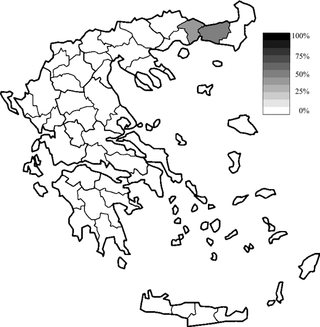
The Muslim minority of Greece is the only explicitly recognized minority in Greece. It numbered 97,605 according to the 1991 census, and unofficial estimates ranged up to 140,000 people or 1.24% of the total population, according to the United States Department of State.

Turkey, officially the Republic of Türkiye, is a country mainly located in Anatolia in West Asia, with a smaller part called East Thrace in Southeast Europe. It borders the Black Sea to the north; Georgia, Armenia, Azerbaijan, and Iran to the east; Iraq, Syria, and the Mediterranean Sea to the south; and the Aegean Sea, Greece, and Bulgaria to the west. Turkey is home to over 85 million people; most are ethnic Turks, while ethnic Kurds are the largest ethnic minority. Officially a secular state, Turkey has a Muslim-majority population. Ankara is Turkey's capital and second-largest city, while Istanbul is its largest city and economic and financial center. Other major cities include İzmir, Bursa, and Antalya.
Minorities in Turkey form a substantial part of the country's population, representing an estimated 25 to 28 percent of the population. Historically, in the Ottoman Empire, Islam was the official and dominant religion, with Muslims having more rights than non-Muslims, whose rights were restricted. Non-Muslim (dhimmi) ethno-religious groups were legally identified by different millet ("nations").
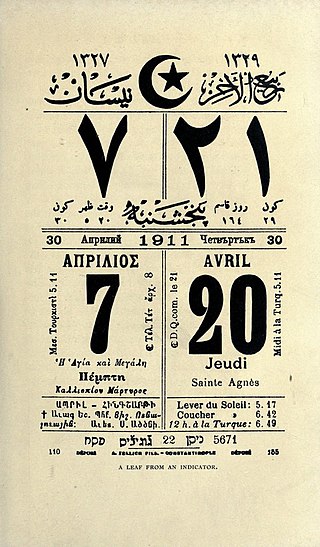
The language of the court and government of the Ottoman Empire was Ottoman Turkish, but many other languages were in contemporary use in parts of the empire. The Ottomans had three influential languages, known as "Alsina-i Thalātha", that were common to Ottoman readers: Ottoman Turkish, Arabic and Persian. Turkish was spoken by the majority of the people in Anatolia and by the majority of Muslims of the Balkans except in Albania, Bosnia, and various Aegean Sea islands; Persian was initially a literary and high-court language used by the educated in the Ottoman Empire before being displaced by Ottoman Turkish; and Arabic, which was the legal and religious language of the empire, was also spoken regionally, mainly in Arabia, North Africa, Mesopotamia and the Levant.

In Turkey, xenophobia and discrimination are present in its society and throughout its history, including ethnic discrimination, religious discrimination and institutional racism against non-Muslim and non-Sunni minorities. This appears mainly in the form of negative attitudes and actions by some people towards people who are not considered ethnically Turkish, notably Kurds, Armenians, Arabs, Assyrians, Greeks, Jews, and peripatetic groups like Romani people, Domari, Abdals and Lom.
The Citizen, speak Turkish! campaign was a Turkish government-funded initiative created by law students which aimed to put pressure on non-Turkish speakers to speak Turkish in public in the 1930s and onwards. In some municipalities, fines were given to those speaking in any language other than Turkish. The campaign has been considered by some authors as a significant contribution to Turkey's sociopolitical process of Turkification.

Secession in Turkey is a phenomenon caused by the desire of a number of minorities living in Turkey to secede and form independent national states.













